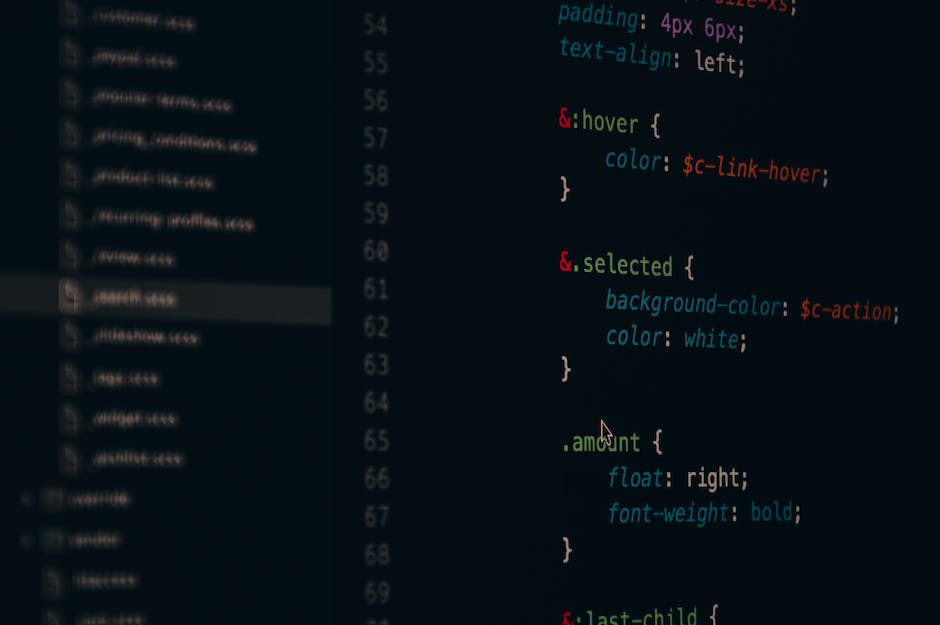Table of Contents
- Introduction
- Improving Recruitment and Selection Processes with Machine Learning
- Enhancing Employee Engagement and Retention through Machine Learning
- Optimizing Performance Management with Machine Learning Algorithms
- Leveraging Machine Learning for Predictive Analytics in HR Decision-Making
- Q&A
- Conclusion
1. Streamline Hiring: Leveraging machine learning to identify top candidates and automate the screening process.
2. Enhance Employee Engagement: Utilizing ML algorithms to analyze employee data and provide personalized recommendations for improving engagement.
3. Predictive Analytics for Retention: Applying machine learning to predict employee turnover and develop proactive strategies for retention.
4. Bias-Free Recruitment: Using ML algorithms to eliminate unconscious bias in the recruitment process and promote diversity and inclusion.
5. Optimize Performance Management: Employing machine learning to analyze performance data and provide insights for effective performance management strategies.
Introduction
Machine learning has revolutionized various industries, and human resources (HR) is no exception. With its ability to analyze vast amounts of data and make accurate predictions, machine learning has found numerous applications in HR. In this article, we will explore five key applications of machine learning in human resources.
Improving Recruitment and Selection Processes with Machine Learning

Machine learning, a subset of artificial intelligence, has revolutionized various industries, and human resources is no exception. With its ability to analyze vast amounts of data and identify patterns, machine learning has become an invaluable tool for improving recruitment and selection processes. In this article, we will explore five applications of machine learning in human resources, focusing on how it can enhance the recruitment and selection processes.
Firstly, machine learning can assist in the creation of more accurate job descriptions. By analyzing historical data and identifying the key skills and qualifications required for a particular role, machine learning algorithms can generate comprehensive and precise job descriptions. This not only saves time for HR professionals but also ensures that the job requirements are aligned with the actual needs of the organization.
Secondly, machine learning can streamline the screening and shortlisting of candidates. Traditionally, HR professionals spend a significant amount of time manually reviewing resumes and applications. However, machine learning algorithms can automate this process by analyzing resumes and identifying relevant keywords, skills, and experiences. This not only speeds up the screening process but also reduces the chances of human bias in candidate selection.
Furthermore, machine learning can improve the accuracy of candidate matching. By analyzing the skills, experiences, and preferences of successful employees, machine learning algorithms can identify the ideal candidate profiles for specific roles. This enables HR professionals to focus their efforts on candidates who are more likely to succeed in the organization, resulting in better hiring decisions and reduced turnover rates.
In addition, machine learning can enhance the assessment of candidates’ skills and abilities. Traditional assessment methods, such as interviews and tests, can be subjective and prone to human bias. However, machine learning algorithms can analyze data from various sources, such as online assessments and simulations, to objectively evaluate candidates’ skills and abilities. This not only provides a more accurate assessment but also reduces the chances of discrimination based on factors like gender or ethnicity.
Lastly, machine learning can predict the success of new hires. By analyzing historical data on employee performance and turnover, machine learning algorithms can identify patterns and factors that contribute to success or failure in the organization. This enables HR professionals to make data-driven decisions when selecting candidates, increasing the chances of hiring individuals who are more likely to succeed and stay with the organization in the long term.
In conclusion, machine learning has the potential to revolutionize the recruitment and selection processes in human resources. By automating tasks, improving accuracy, and reducing bias, machine learning can save time, improve hiring decisions, and ultimately contribute to the success of organizations. However, it is important to note that machine learning should be used as a tool to support HR professionals rather than replace them. Human judgment and expertise are still crucial in making final decisions and ensuring a positive candidate experience. As technology continues to advance, it is essential for HR professionals to embrace machine learning and leverage its capabilities to drive better outcomes in recruitment and selection.
Enhancing Employee Engagement and Retention through Machine Learning
Enhancing Employee Engagement and Retention through Machine Learning
In today’s fast-paced and competitive business environment, employee engagement and retention have become critical factors for the success of any organization. Companies are constantly looking for innovative ways to keep their employees engaged and motivated, as well as to reduce turnover rates. One such innovation that has gained significant attention in recent years is the application of machine learning in human resources.
Machine learning, a subset of artificial intelligence, involves the development of algorithms that enable computers to learn and make predictions or decisions without being explicitly programmed. By analyzing large amounts of data, machine learning algorithms can identify patterns and trends that humans may not be able to detect. This technology has the potential to revolutionize various aspects of human resources, including employee engagement and retention.
One application of machine learning in human resources is the prediction of employee turnover. By analyzing historical data on employee performance, satisfaction, and other relevant factors, machine learning algorithms can identify patterns that are indicative of an employee’s likelihood to leave the company. This information can then be used to develop targeted retention strategies, such as offering additional training or development opportunities to at-risk employees.
Another application of machine learning in employee engagement is the personalization of learning and development programs. Traditional training programs often follow a one-size-fits-all approach, which may not be effective for all employees. Machine learning algorithms can analyze individual employee data, such as job performance, learning preferences, and career goals, to create personalized training plans. This not only enhances the effectiveness of the training but also demonstrates the organization’s commitment to the individual growth and development of its employees.
Machine learning can also be used to improve employee feedback and performance evaluations. Traditional performance evaluations are often subjective and prone to bias. By analyzing objective data, such as sales figures or customer satisfaction ratings, machine learning algorithms can provide more accurate and unbiased assessments of employee performance. This can help identify areas for improvement and provide targeted feedback to employees, ultimately leading to increased engagement and productivity.
Furthermore, machine learning can be used to enhance employee recognition and rewards programs. By analyzing data on employee performance, contributions, and preferences, machine learning algorithms can identify the most effective ways to recognize and reward employees. This could include personalized recognition messages, tailored rewards, or even recommendations for career advancement opportunities. By providing meaningful and personalized recognition, organizations can foster a culture of appreciation and increase employee engagement and loyalty.
Lastly, machine learning can be used to improve the hiring and onboarding process. By analyzing data on successful hires, machine learning algorithms can identify the characteristics and skills that are most predictive of success in a particular role or organization. This information can then be used to develop more effective job descriptions, screening processes, and interview questions. Additionally, machine learning can analyze data on employee onboarding experiences to identify areas for improvement and provide personalized onboarding plans for new hires.
In conclusion, machine learning has the potential to significantly enhance employee engagement and retention in organizations. By leveraging the power of data analysis and prediction, machine learning algorithms can provide valuable insights and recommendations for various aspects of human resources. From predicting employee turnover to personalizing training programs and improving performance evaluations, machine learning can help organizations create a more engaged and productive workforce. As this technology continues to evolve, it is crucial for organizations to embrace and leverage its potential to stay ahead in the competitive business landscape.
Optimizing Performance Management with Machine Learning Algorithms
Optimizing Performance Management with Machine Learning Algorithms
In today’s fast-paced business environment, organizations are constantly seeking ways to improve their performance management processes. Traditional methods of evaluating employee performance, such as annual reviews, have proven to be ineffective and time-consuming. As a result, many companies are turning to machine learning algorithms to optimize their performance management systems.
Machine learning algorithms have the ability to analyze large amounts of data and identify patterns and trends that may not be apparent to human observers. This allows organizations to gain valuable insights into employee performance and make data-driven decisions. Here are five applications of machine learning in performance management:
1. Predictive Analytics: Machine learning algorithms can analyze historical performance data and identify patterns that are indicative of future success or failure. By using predictive analytics, organizations can identify high-performing employees and provide them with the necessary resources and support to continue excelling. Similarly, underperforming employees can be identified early on, allowing for targeted interventions and coaching.
2. Personalized Development Plans: Machine learning algorithms can analyze individual employee data, such as skills, experience, and performance history, to create personalized development plans. These plans can identify areas for improvement and recommend specific training programs or learning opportunities. By tailoring development plans to each employee’s unique needs, organizations can maximize their potential and foster a culture of continuous learning.
3. Real-time Feedback: Traditional performance management systems often rely on infrequent feedback, such as annual or quarterly reviews. Machine learning algorithms can enable real-time feedback by analyzing data from various sources, such as project management tools, customer feedback, and peer evaluations. This allows managers to provide timely feedback and address performance issues as they arise, leading to faster improvement and increased employee engagement.
4. Bias Detection: Human bias is a common challenge in performance management. Machine learning algorithms can help detect and mitigate bias by analyzing performance data and identifying patterns that may indicate unfair treatment. By flagging potential bias, organizations can ensure that performance evaluations are fair and objective, leading to a more inclusive and diverse workforce.
5. Succession Planning: Machine learning algorithms can analyze employee data, such as performance history, skills, and career aspirations, to identify potential successors for key roles within the organization. By identifying high-potential employees, organizations can proactively develop and groom them for future leadership positions. This not only ensures a smooth transition when key employees leave but also motivates employees by providing them with clear career paths.
In conclusion, machine learning algorithms have the potential to revolutionize performance management in human resources. By leveraging the power of data analysis and predictive analytics, organizations can optimize their performance management systems and make more informed decisions. From personalized development plans to real-time feedback and bias detection, machine learning algorithms offer a range of applications that can improve employee performance and engagement. As organizations continue to embrace technology, it is crucial for HR professionals to understand and harness the power of machine learning to drive organizational success.
Leveraging Machine Learning for Predictive Analytics in HR Decision-Making
Machine learning, a subset of artificial intelligence, has revolutionized various industries, and human resources is no exception. With its ability to analyze vast amounts of data and identify patterns, machine learning has become an invaluable tool for HR professionals. In this article, we will explore five applications of machine learning in human resources, focusing on how it can be leveraged for predictive analytics in HR decision-making.
One of the key areas where machine learning can be applied in HR is talent acquisition. Traditional methods of recruitment often rely on subjective assessments and gut feelings. However, machine learning algorithms can analyze historical data on successful hires and identify the key characteristics and traits that lead to a good fit within the organization. By using predictive analytics, HR professionals can make more informed decisions when selecting candidates, increasing the likelihood of finding the right talent for the job.
Another application of machine learning in HR is employee retention. High employee turnover can be costly for organizations, both in terms of time and resources. Machine learning algorithms can analyze various factors such as employee demographics, performance data, and engagement levels to identify patterns that indicate a higher risk of turnover. By identifying these patterns early on, HR professionals can take proactive measures to retain valuable employees, such as offering training opportunities or adjusting compensation packages.
Machine learning can also be used to improve employee performance and development. By analyzing performance data and identifying patterns, machine learning algorithms can provide personalized recommendations for training and development programs. This allows HR professionals to tailor learning opportunities to individual employees’ needs, increasing the effectiveness of these programs and ultimately improving overall performance.
In addition to talent acquisition, employee retention, and performance improvement, machine learning can also be applied to workforce planning. By analyzing historical data on workforce trends, machine learning algorithms can predict future workforce needs and identify potential skill gaps. This allows HR professionals to proactively address these gaps by implementing training programs or recruiting new talent, ensuring that the organization has the right people with the right skills at the right time.
Lastly, machine learning can be used to enhance the employee experience. By analyzing employee feedback, sentiment analysis algorithms can identify patterns and trends in employee satisfaction and engagement levels. This information can then be used to make data-driven decisions to improve the employee experience, such as implementing changes to workplace policies or addressing specific pain points identified by employees.
In conclusion, machine learning has the potential to revolutionize human resources by providing valuable insights and predictive analytics. From talent acquisition to employee retention, performance improvement to workforce planning, and enhancing the employee experience, machine learning can help HR professionals make more informed decisions and drive positive outcomes for both employees and organizations. As technology continues to advance, it is crucial for HR professionals to embrace machine learning and leverage its power to stay ahead in an increasingly competitive landscape.
Q&A
1. What are some applications of machine learning in human resources?
– Predictive analytics for employee retention and turnover
– Automated resume screening and candidate shortlisting
– Personalized employee training and development programs
– Sentiment analysis for employee feedback and engagement
– Bias detection and mitigation in recruitment and performance evaluations
2. How can machine learning be used for predictive analytics in HR?
Machine learning algorithms can analyze historical HR data to identify patterns and factors that contribute to employee turnover. This enables HR professionals to predict which employees are at risk of leaving and take proactive measures to retain them.
3. How does machine learning help in automating resume screening?
Machine learning algorithms can be trained to analyze resumes and job descriptions, automatically matching candidates with the most relevant skills and qualifications. This saves time for HR professionals by eliminating the need for manual screening of numerous resumes.
4. What is the role of machine learning in bias detection and mitigation in HR?
Machine learning algorithms can identify and flag potential biases in recruitment and performance evaluation processes. By analyzing large datasets, these algorithms can help HR professionals identify and address biases related to gender, race, or other protected characteristics, promoting fair and unbiased decision-making.
Conclusion
In conclusion, here are five applications of machine learning in human resources:
1. Recruitment and candidate screening: Machine learning algorithms can analyze resumes, job descriptions, and candidate profiles to identify the most suitable candidates for a particular role, saving time and effort in the recruitment process.
2. Employee performance evaluation: Machine learning can help HR professionals assess employee performance by analyzing various data points such as productivity, attendance, and feedback, providing more accurate and unbiased evaluations.
3. Employee retention and attrition prediction: By analyzing historical data and patterns, machine learning algorithms can predict which employees are more likely to leave the organization, allowing HR to take proactive measures to retain valuable talent.
4. Training and development: Machine learning can personalize training programs by analyzing individual employee data and learning patterns, ensuring that employees receive the most relevant and effective training to enhance their skills and performance.
5. Employee sentiment analysis: Machine learning algorithms can analyze employee feedback, surveys, and social media data to gauge employee sentiment and identify areas of improvement within the organization, helping HR make data-driven decisions to enhance employee satisfaction and engagement.




